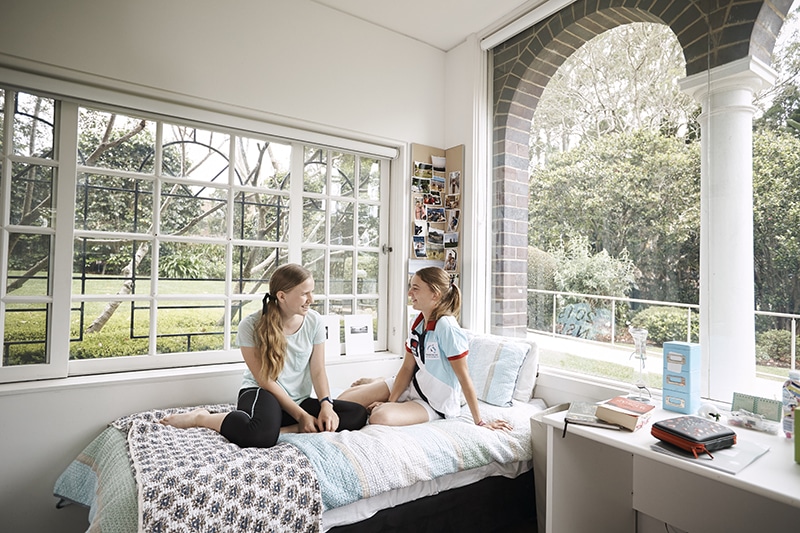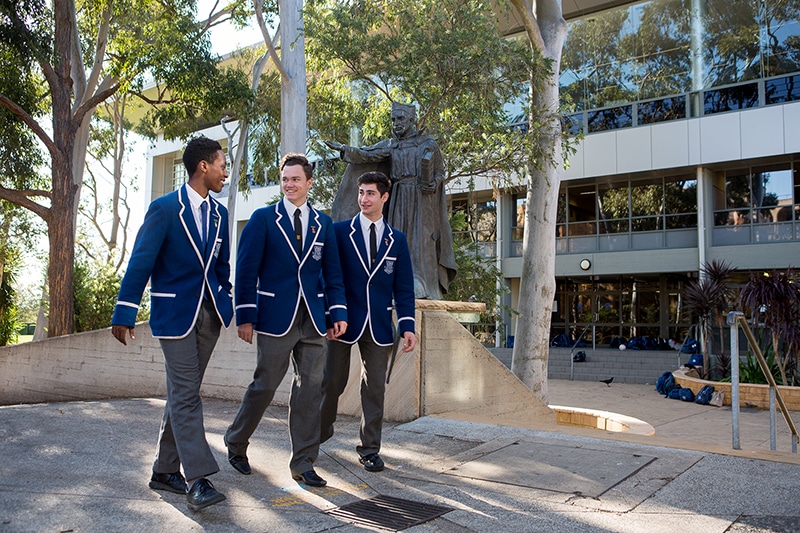
The days of ice-cold showers in open area bathrooms, unidentifiable food, military-style dormitories with regulation bedspreads (hospital corners, please) and white sheets stiff as boards with starch, are long gone in Australian boarding schools.
Along with banishing the austere living conditions of decades past, went the idea that boarding was just a place to live while you learned.
Contemporary boarding aspires to be a home away from home for many children from rural and remote parts of the country, with many schools looking for ways to make it even more than that – an extension of home, the boarding community being family.
Ascham School’s Head of Boarding, Sue Newton says while boarding has a long, proud history of providing education for rural and remote communities, there are challenges facing the sector against a backdrop of rapid change within the wider education sector and society itself.
“Boarding, particularly in the independent schools market, is highly competitive and parents have a vast array of educational options available.
“There are several current and emerging issues, I believe, that are affecting the shape of boarding in Australia…and why I believe boarding is well positioned to excel in the future.”
Ms Newton notes the following as just some of the current challenges:
- Increased complexity in the needs of adolescents, including mental health issues, the impact of social media and technology, increased socio-economic and cultural diversity, and physical health issues such as obesity and allergies.
- Increased complexity in the needs and expectations of parents, including changes in parent/child relationships, parenting styles, and family structure, increased or decreased parental involvement and engagement.
- The need for boarding staff to have increasing skills sets to respond to the complexities within boarding.
Rochelle Wiley, Head of Boarding at Abbotsleigh, agrees.
“Having a comprehensive knowledge of duty of care, and our child protection obligations are crucial.
“Schools have to keep abreast of current issues and use the resources of their counselling and pastoral care teams to ensure all boarders feel happy, safe and nurtured in the boarding environment.”
Director of Enrolments at The Armidale School (TAS), Pip Warrick says much of the change is being driven by parents having higher expectations than previous generations.
“Accommodation standards, flexible leave arrangements, the advent of the internet and social media, as well as society’s growing focus on individual rights rather than collective responsibilities, all offer challenges to the boarding experience.”
Ms Newton adds, “As the industry becomes a profession within its own right, it is also becoming a more regulated one with the introduction of the formal boarding standards driving quality improvements at every level of the industry.”
So, what are the hallmarks of contemporary boarding?

Barker College Director of Boarding, Jon Rheinberger says, “The days of one-size fits all boarding are behind us.”
Director of Boarding at Kinross Wolaroi School, Matt Curran explains further that boarding schools must be responsive to the needs of their community, as well as the current and future needs of their students.
“As communities become more mobile, contemporary boarding schools need to respond to and reflect an increasingly diverse community.
“Boarding school is an incredibly important time in a student’s personal development, however, we should recognise every boarding student will finally outgrow their environment.
“We aim for our students to become ready and able to take the next step after they leave us, secure in the knowledge of who they are, and what they do best.”
Head of Frensham, Julie A Gillick believes contemporary boarding can and should add value to what parents are already expecting, being much more than the highest quality academic outcomes for each student.
“We need to create an environment where students are inspired to be ambitious academically and to thrive in terms of character, leadership, and wellbeing.
“Contemporary boarding, here, sits within the ‘whole-school’ operation…the residential experience needs to be integrated – not separate from what some might call the ‘normal’ school day.”
Community is at the heart of contemporary boarding at St Ignatius College, as Director of Boarding, Adrian Byrne explains.
“The boys need to feel connected to the school, to the other boarders, and importantly stay connected to their own communities.
“It’s up to us to foster a sense of community to ensure the boys flourish in the boarding house.”

Part 2 – Meeting the needs of contemporary boarders
In the second part of our series looking at the changing face of contemporary boarding, we’ll look at how boarding schools are facing the challenges of meeting and resourcing the needs of boarders, and the expectations of their parents.
Part 3 – Technology in the boarding house
In the final part of our series looking at contemporary boarding we look at the opportunities and challenges of technology in the boarding house, and how schools are managing the balance between healthy use and imposing rules.
Find more information about boarding school life and choosing schools in our blogs as well as what questions to ask schools about boarding on our Checklist page.
Share